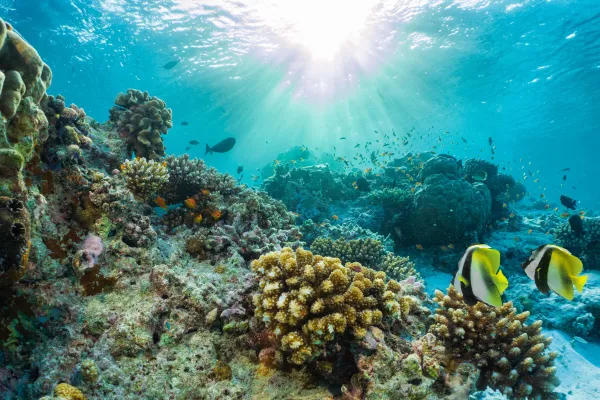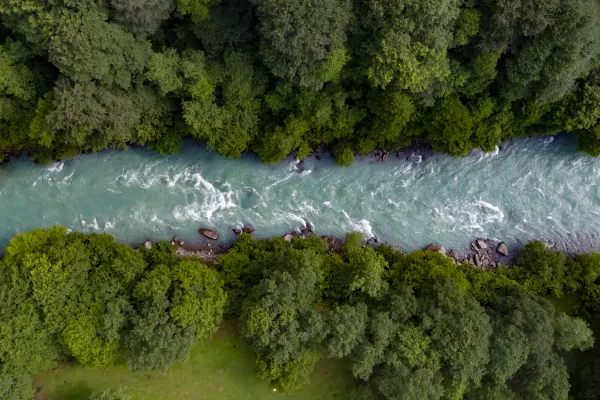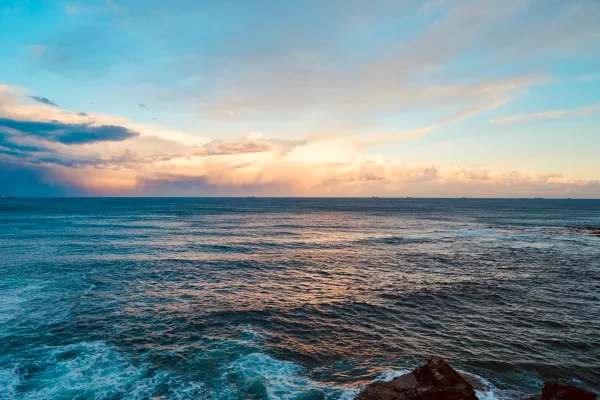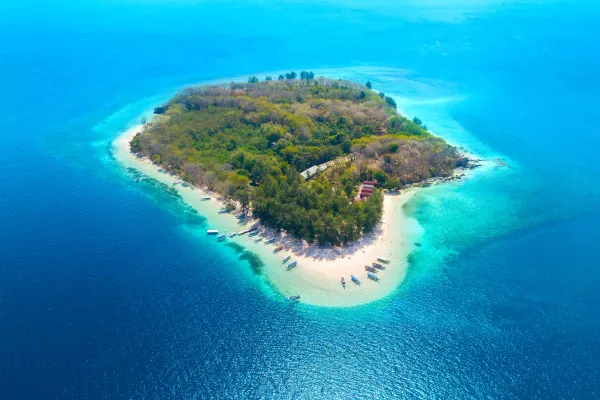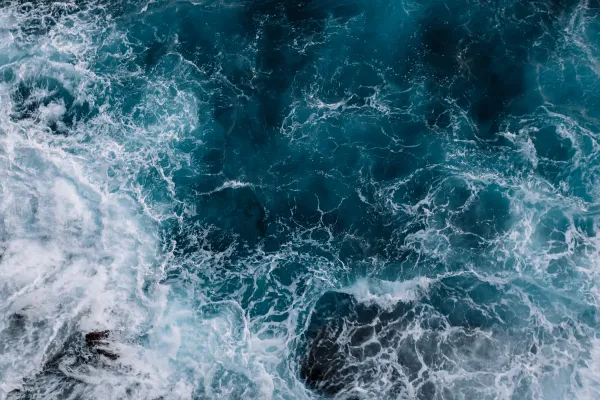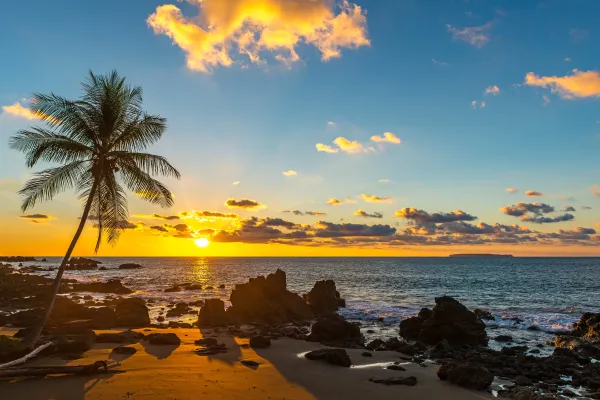The vanishing of South Africa's white sharks
Until 2017, the small fishing village of Gansbaai, located roughly two hours from the world-famous South African city of Cape Town, was renowned as the "Great White Shark Capital of the World". But in 2017, it all changed.
What remains is the question: Where have South Africa's great white sharks gone? Why are they vanishing? Great white sharks are the largest predatory fish on Planet Earth, growing to an average of 15 feet in length.
The white sharks of Gansbaai
For many years, tourists travelled in flocks from far-flung corners of the globe to join the cage-diving boat tours that launched from the South African village Gansbaai. The trips took clients roughly 15 minutes out to sea to waters that, until recently, were prolifically inhabited by arguably the world's most fascinating marine predator: the great white shark (Carcharodon carcharias).
For a long time, the most common haunt of great whites on the Gansbaai coast was aptly named "Shark Alley". This is a narrow channel between two rocky islands roughly 8.5 kilometres from the mainland, Dyer Island, and the smaller Geyser Rock.
Geyser Rock is home to the largest offshore colony of Cape fur seals in South Africa. This species is well known as one of the great whites' preferred food sources. When the seal pups ventured out on their own in the spring and early summer months, they served as easy and convenient fodder for the white sharks patrolling the channel.
However, in May 2017, an unprecedented event shattered both Gansbaai's great white shark population and the town's status as one of the planet's white shark hot spots...

Predator or prey?
So what happened? A pair of orcas was spotted in the bay and were dubbed “Port” and “Starboard” by the local marine community. Their names were a reference to their unusually floppy dorsal fins, which leaned left and right, respectively. Orcas are considered the only natural predators of great white sharks. However, the two species have only been rarely known to predate on each other in the wild. This has traditionally been particularly true when other food sources are readily available.
Orcas’ presence along the South African coast is not uncommon. Moreover, several scientific and many more anecdotal reports describe great white sharks and orcas interacting peacefully in local waters in previous years.
Shattering findings in Western Cape
However, the sudden finding of five white shark carcasses along the Western Cape coast, two with visible orca bites, was concerning to local conservationists. It was a strange and unexpected blow to hopes for the long-term survival of the vulnerable white shark population. It also questioned the role of Port and Starboard in the demise of these predators so critical to the ocean’s health.
After the first carcass washed ashore in April 2017, the great whites disappeared from the bay for a whole month. When threatened, many fish species are known to emit a pheromone to alert others of their kind to their distress. A similar event has been observed among sharks in the Farallon Islands. Therefore, this reaction was a plausible one, although no study definitively proves sharks produce such a pheromone. After roughly a month, a few white sharks tentatively reappeared in the bay. However, after subsequent orca predations on the great white population, they disappeared again for several more months.
Disappearance of the great whites
Four years later, the white sharks have yet to return to the bay in numbers resembling those of the past, although a few individuals have been sporadically spotted in that time. This has been a devastating blow for both marine conservation and local ecotourism. The orcas became the scapegoat and have been widely blamed for the absence of the region's great white shark population. However, research has revealed there is more to the story of their disappearance.
Great whites prey on other sharks, crustaceans, molluscs, and sea birds but also on sea lions, seals, and small toothed whales.
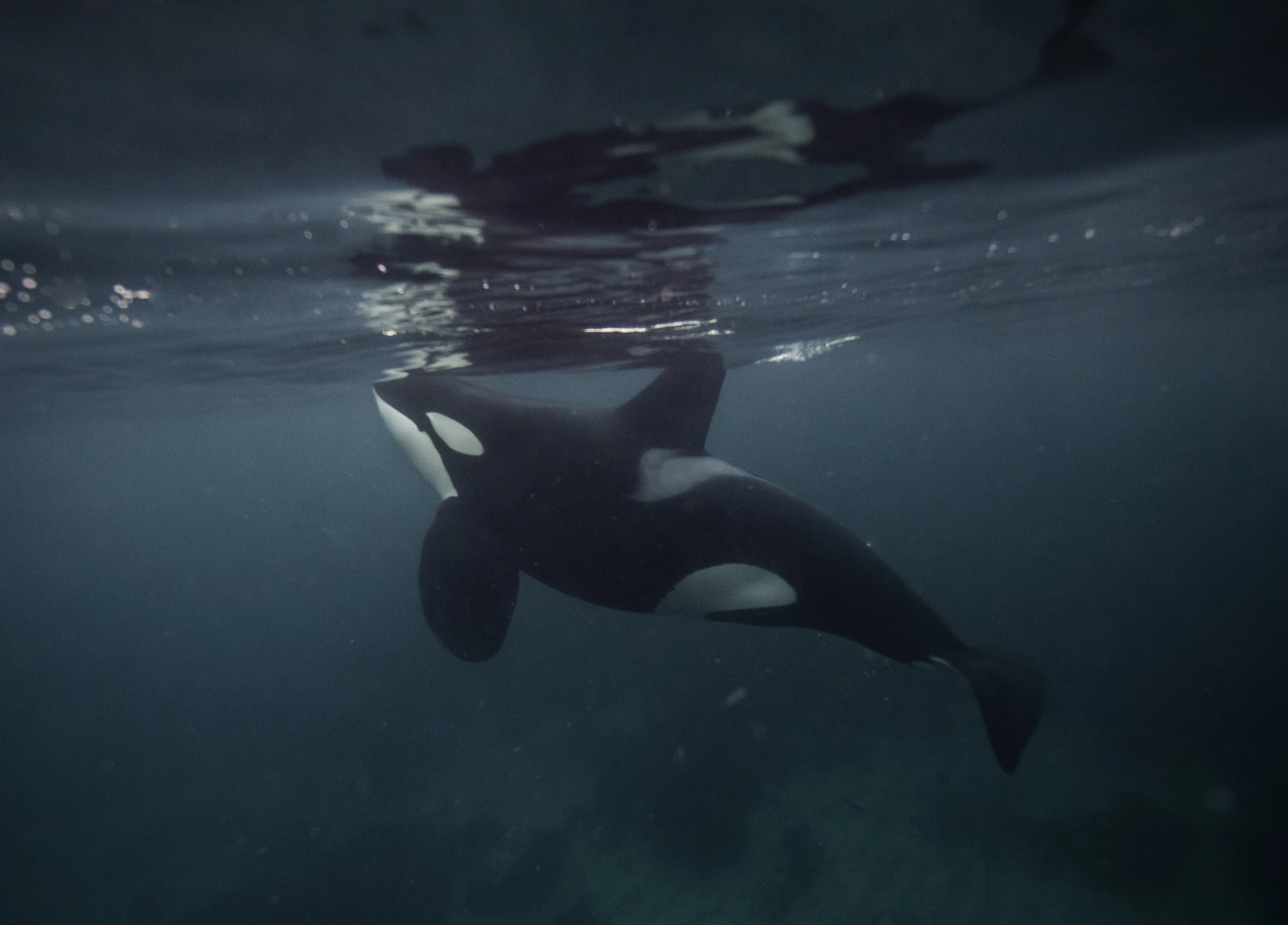
Study on South Africa's Great White Sharks
Statistics gathered by a team of researchers from Stellenbosch University in the preceding decade suggest that the area's great white shark population was under severe threat long before Port and Starboard's arrival.
In 2009, Zoology PhD student, Sara Andreotti, and shark conservationist, Mike Rutzen, set off on a quest to measure the South African white shark population. Rutzen is one of the few people in the world to have free-dived with great whites, which he has done regularly over the last 20 years. He has also appeared in several international documentaries to voice his support for great white conservation.
Applying the Sharksafe BarrierTM technology
Dr. Andreotti has since obtained her PhD. She is currently working as a researcher for the Department of Botany and Zoology and the Conservation Genomics group of Stellenbosch University. Additionally, both researchers are among the founders of the Sharksafe BarrierTM technology.
This is an innovative, eco-friendly system aimed at deflecting shark-human conflict and protecting both species, as well as other marine animals. The barrier is designed to look like a thick kelp forest, which white sharks avoid.
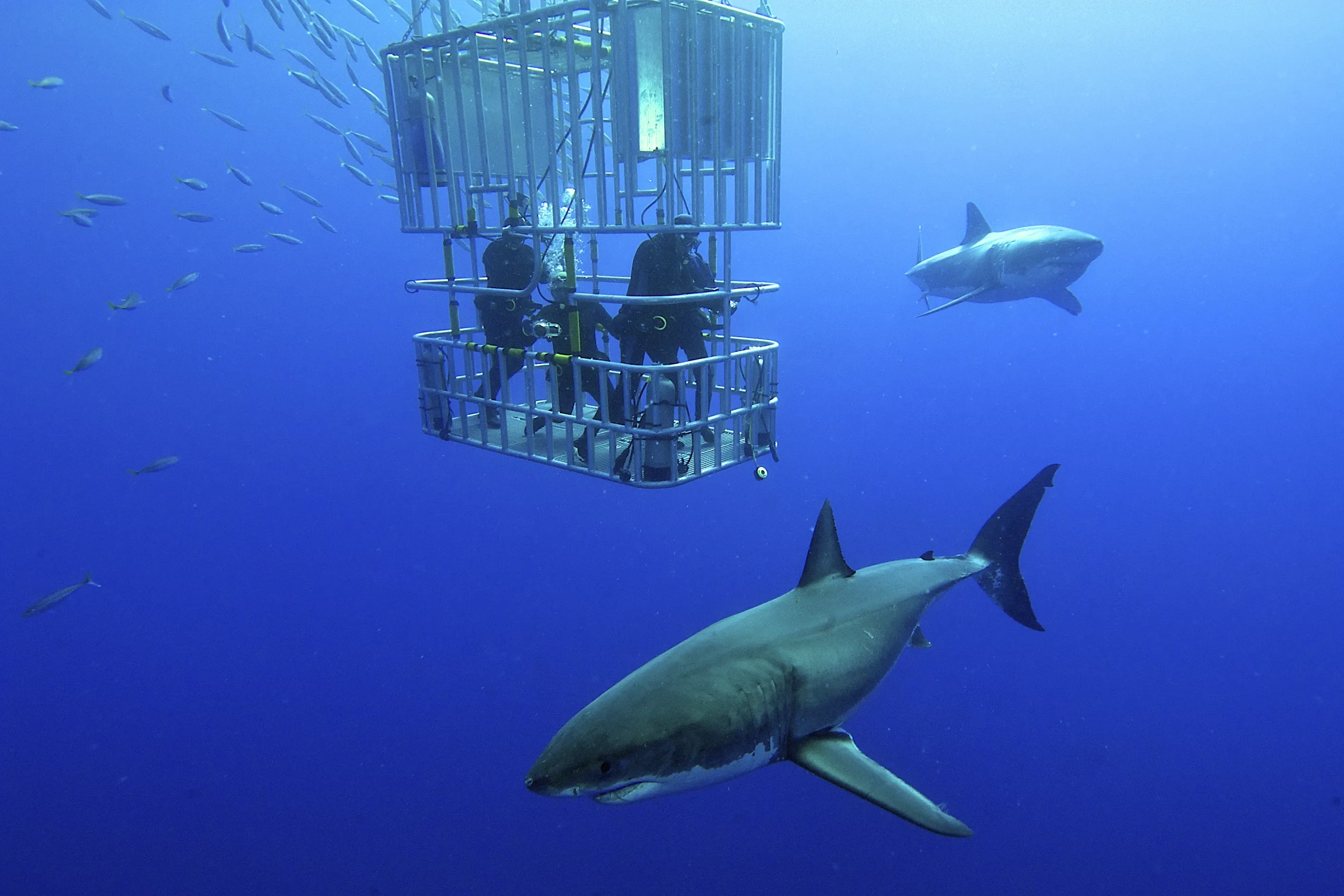
This biomimicry is combined with strong magnets, proven to deter white sharks by overwhelming their electro-magnetic sense at short range, to which great white sharks are extremely sensitive. Additionally, it allows other oceanic animals, such as turtles and dolphins, to pass through without injuries or fatalities. The Sharksafe BarrierTM performed perfectly in exclusion trials during its experimental phase, with not a single shark entering the exclusion area over two seasons. Currently, it is being rolled out overseas in collaboration with partners from Reunion Island.
Measuring the remaining white shark population
Rutzen was the owner of one of Gansbaai's cage diving operations and had noticed the number of great whites declining over the years. Both he and Andreotti were curious and deeply concerned about the remaining population of these formidable marine animals.
Consequently, they embarked on a five-year sailing trip that took in the entire South African coastline to measure the remaining white shark population.

